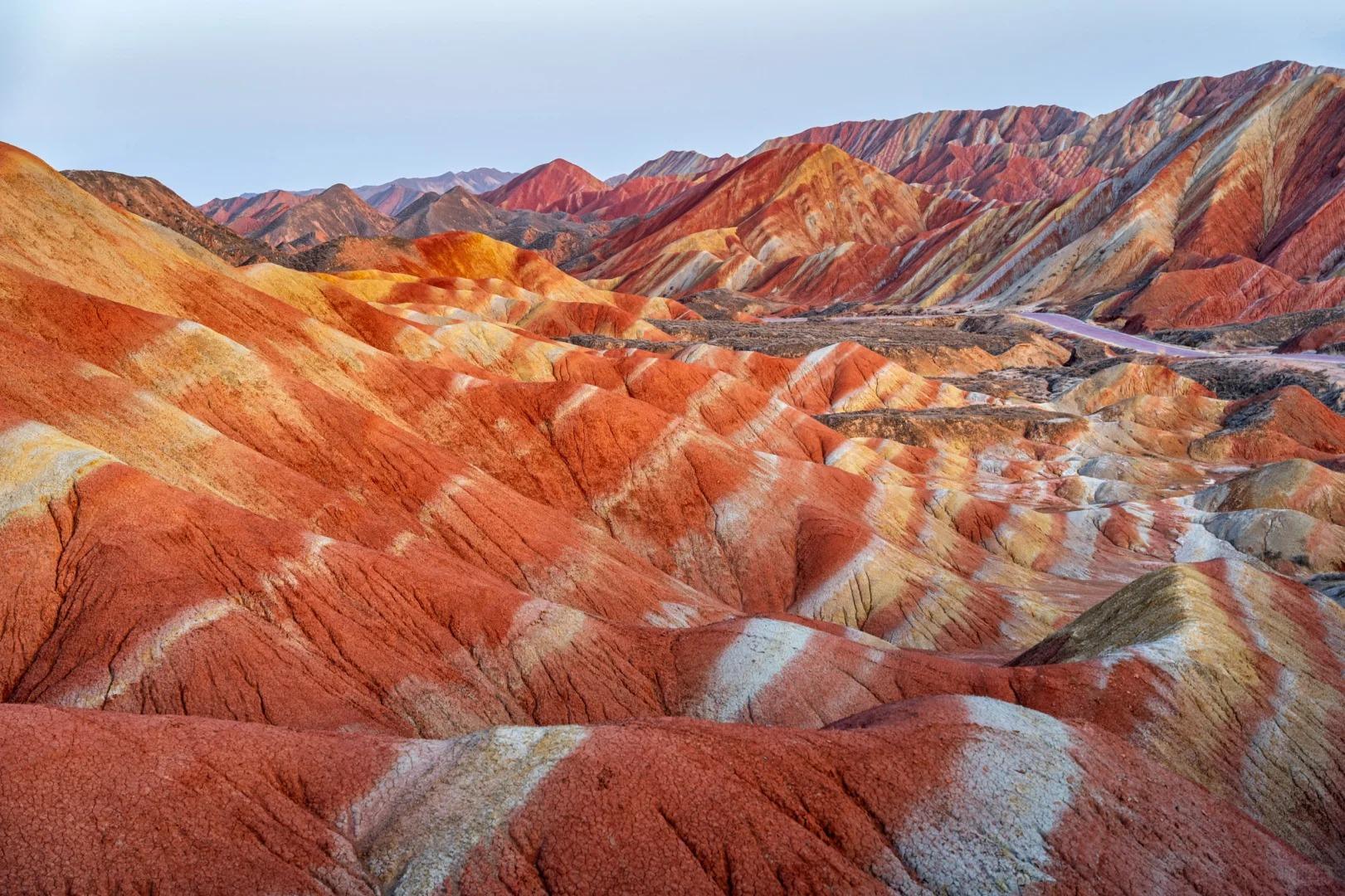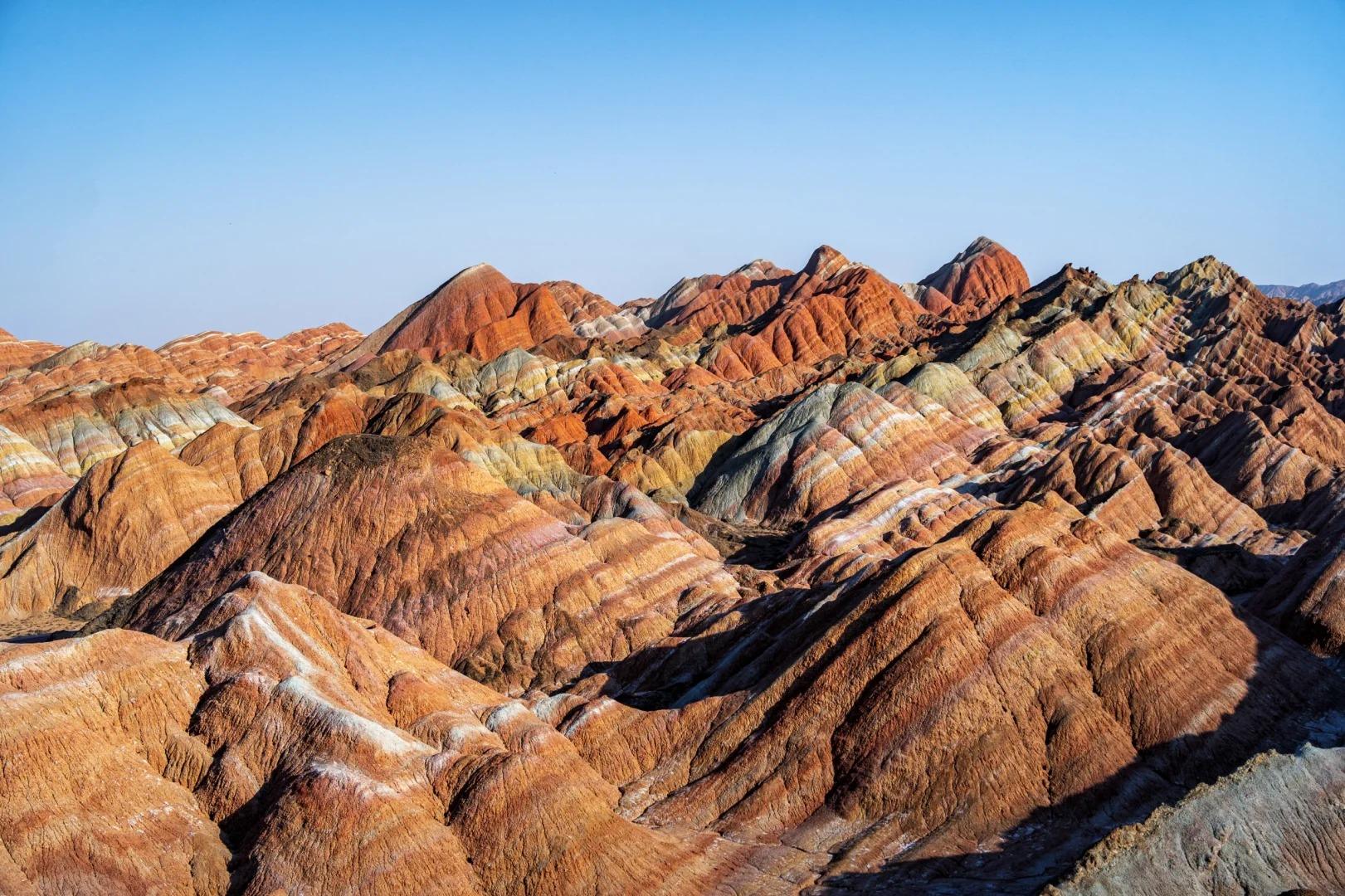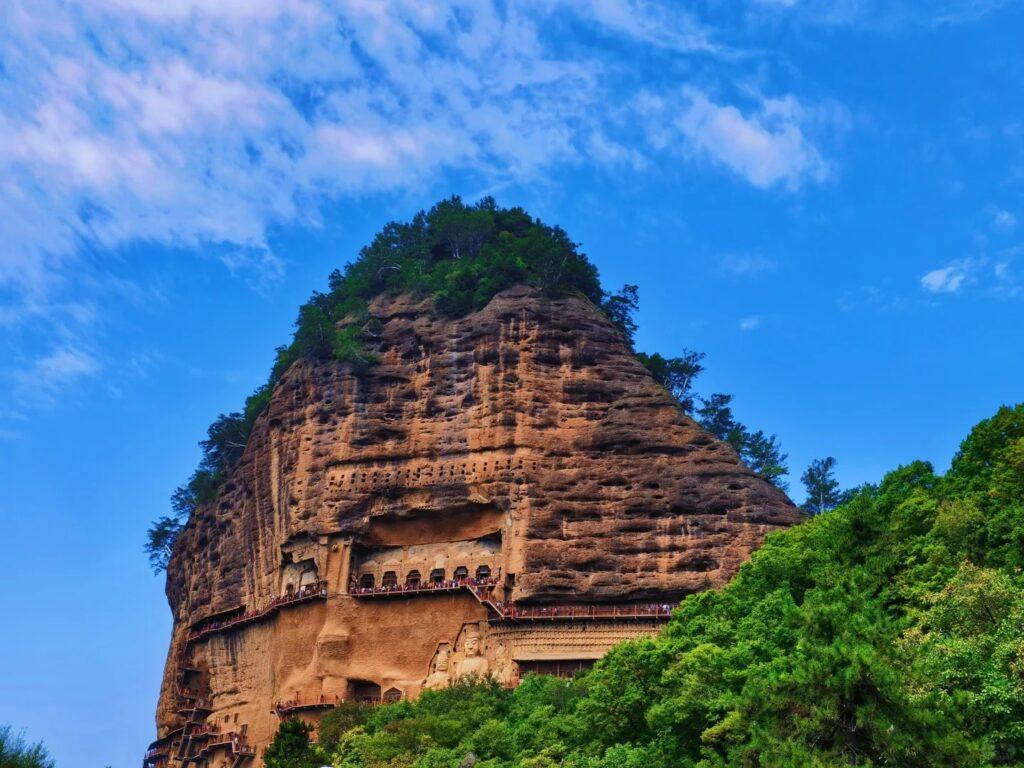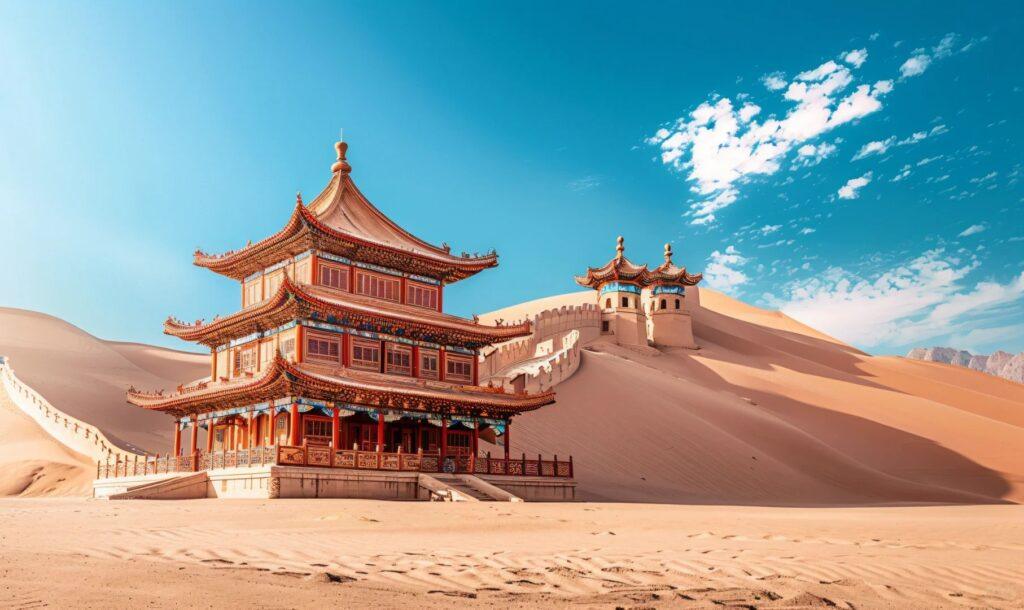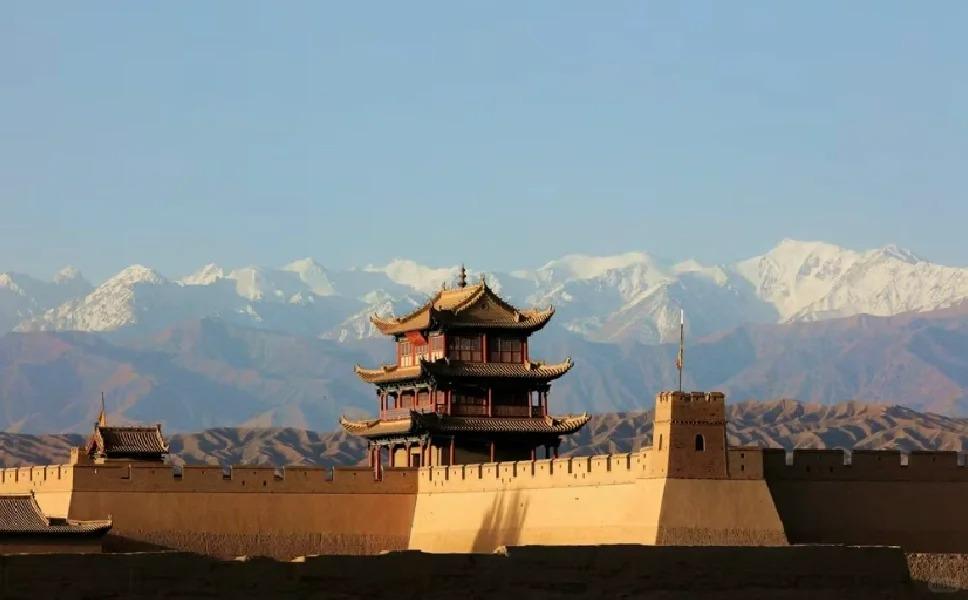Visiting Information
| Information | Details |
|---|---|
| Chinese Name | 丹霞地貌 (Dānxiá Dìmào) |
| Location and Address | Various locations across China, including Zhangye Danxia National Geological Park in Gansu Province |
| Opening Time/Hours | Varies by location, typically 8:00 AM to 6:00 PM |
| Entrance Fee | Varies by location, e.g., Zhangye Danxia: 74 CNY (April to November), 40 CNY (December to March) |
| How to Get There | By Metro: Not applicable for most Danxia sites By Bus: Public buses available from nearby cities to some Danxia sites By Taxi: Available from nearby cities, but can be expensive for long distances |
| Best Time for Visit | Spring (April-May) and Autumn (September-October) for comfortable weather and vibrant colors |
| Contact Info | Varies by location, e.g., Zhangye Danxia Geological Park: +86 936 8841003 |
Overview
Danxia landform is a unique type of petrographic geomorphology found in various parts of China. Characterized by red-colored sandstones and steep cliffs, these formations are known for their striking beauty and geological significance. The term “Danxia” literally means “rosy cloud,” referring to the vibrant hues of the rock formations, especially during sunrise and sunset.
Historical Background
The Danxia landforms were formed over millions of years through a complex process of tectonic uplift and erosion. These landscapes began to take shape during the Cretaceous period, about 145 to 66 million years ago. The red color of the rocks comes from iron oxide deposits. Over time, wind and water erosion sculpted the sandstone into the remarkable shapes we see today. The term “Danxia landform” was first proposed by Chinese geologists in the 1930s, and since then, these formations have been the subject of extensive geological research and conservation efforts.
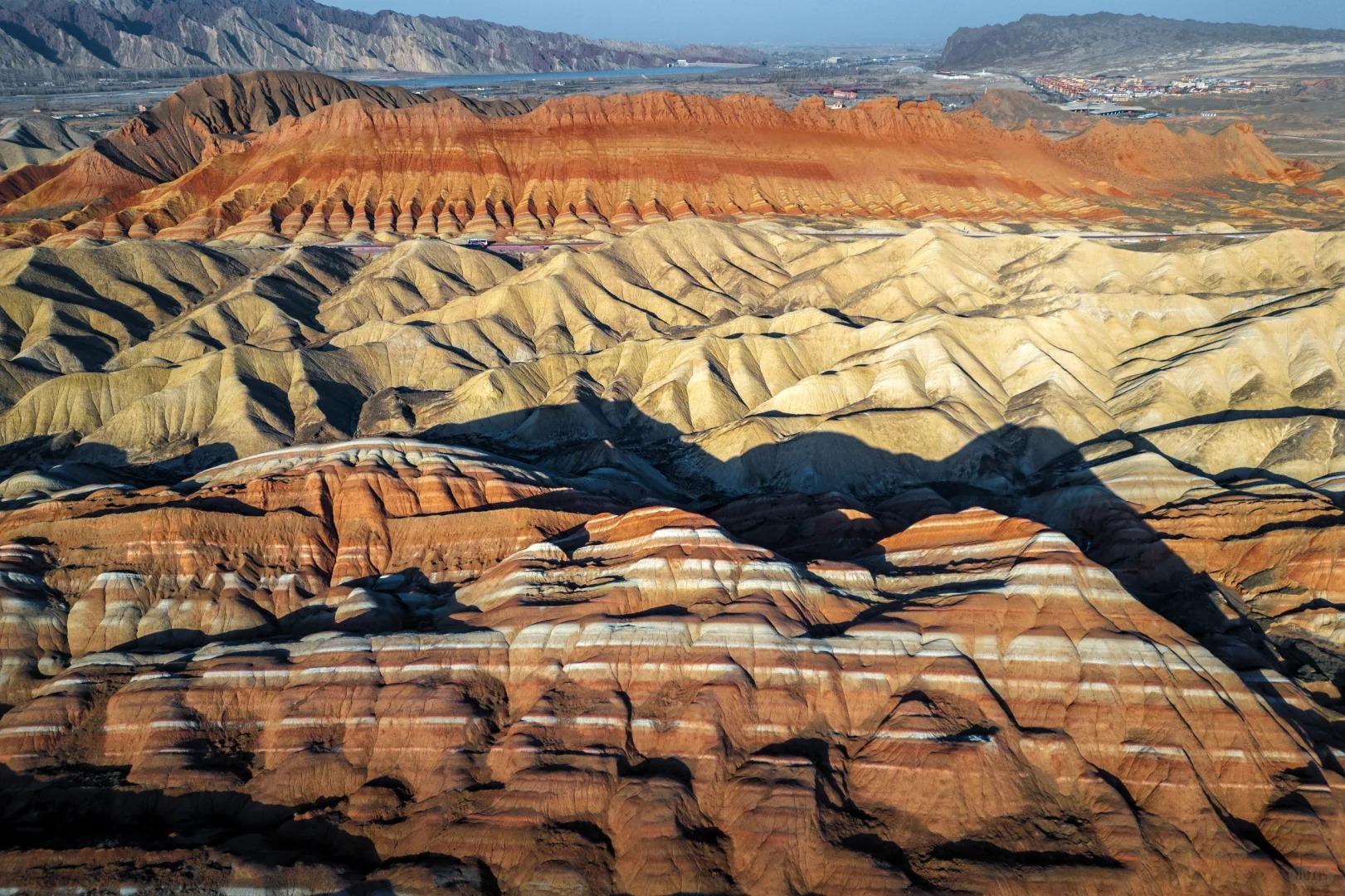
Architectural Features
- Red Cliffs and Steep Rock Faces: The most distinctive feature of Danxia landforms is their towering red cliffs. These steep rock faces are composed of layers of red sandstone and conglomerate rocks. The vibrant red color, which can range from deep crimson to bright orange, is due to the presence of iron oxide. These cliffs can reach heights of several hundred meters, creating dramatic and imposing landscapes.
- Diverse Erosional Landforms: Danxia landscapes are known for their variety of erosional features. These include narrow ravines, natural pillars, towers, bridges, caves, and arches. Each of these formations is the result of differential weathering and erosion processes acting on the varied rock layers over millions of years. The diversity of these landforms contributes to the scenic beauty and geological interest of Danxia sites.
- Layered Rock Formations: A key characteristic of Danxia landforms is the visible layering in the rock. These layers, or strata, represent different periods of sediment deposition and can often be seen clearly in the cliff faces. The layers may vary in color and thickness, creating striking patterns and adding to the visual appeal of the landscapes.
- Unique Weathering Patterns: The surfaces of Danxia rocks often display intricate weathering patterns. These can include honeycomb-like structures, fluting, and other small-scale erosional features. These patterns are the result of differential weathering due to variations in rock composition and exposure to the elements, adding another layer of visual interest to the landforms.
Cultural Importance
Danxia landforms hold significant cultural importance in China. They have inspired Chinese art, poetry, and mythology for centuries. Many Danxia sites are considered sacred in traditional Chinese culture and are associated with Taoist and Buddhist traditions. The unique landscapes have also played a role in the development of Chinese landscape aesthetics and have been featured in classical Chinese paintings. Today, Danxia landforms are not only geological wonders but also symbols of China’s natural heritage, playing a crucial role in environmental education and cultural tourism.
Surrounding Attractions
- Binggou Danxia Scenic Area: Located near the Zhangye Danxia National Geological Park in Gansu Province, the Binggou Danxia Scenic Area offers a different but equally impressive Danxia landscape. Known as the “Ghost City” due to its eerie rock formations, this area features a more rugged and wild terrain compared to the main Zhangye site. Visitors can explore unique rock pillars, castle-like formations, and deep gorges, providing a complementary experience to the colorful hills of Zhangye.
- Mati Temple Grottoes: Not far from the Zhangye Danxia landform, the Mati Temple Grottoes offer a glimpse into the region’s rich Buddhist history. Carved into the cliffs, these grottoes house numerous Buddhist statues and murals dating back to the Northern Liang Dynasty (397-460 AD). The site combines natural beauty with historical and cultural significance, making it an excellent addition to a Danxia landform tour.
- Zhangye Wetland Park: For a change of scenery, visitors can explore the Zhangye Wetland Park, located in the city of Zhangye. This park offers a stark contrast to the arid Danxia landscapes, featuring lush greenery, lakes, and a variety of bird species. It’s an excellent spot for nature lovers and provides a relaxing environment after the more rugged Danxia explorations.
- Giant Buddha Temple: In the city of Zhangye, the Giant Buddha Temple (Dafo Si) is a significant historical and cultural site. It houses the largest reclining Buddha statue in China and offers insights into the region’s Buddhist heritage. The temple’s architecture and artifacts provide a cultural complement to the natural wonders of the Danxia landforms.
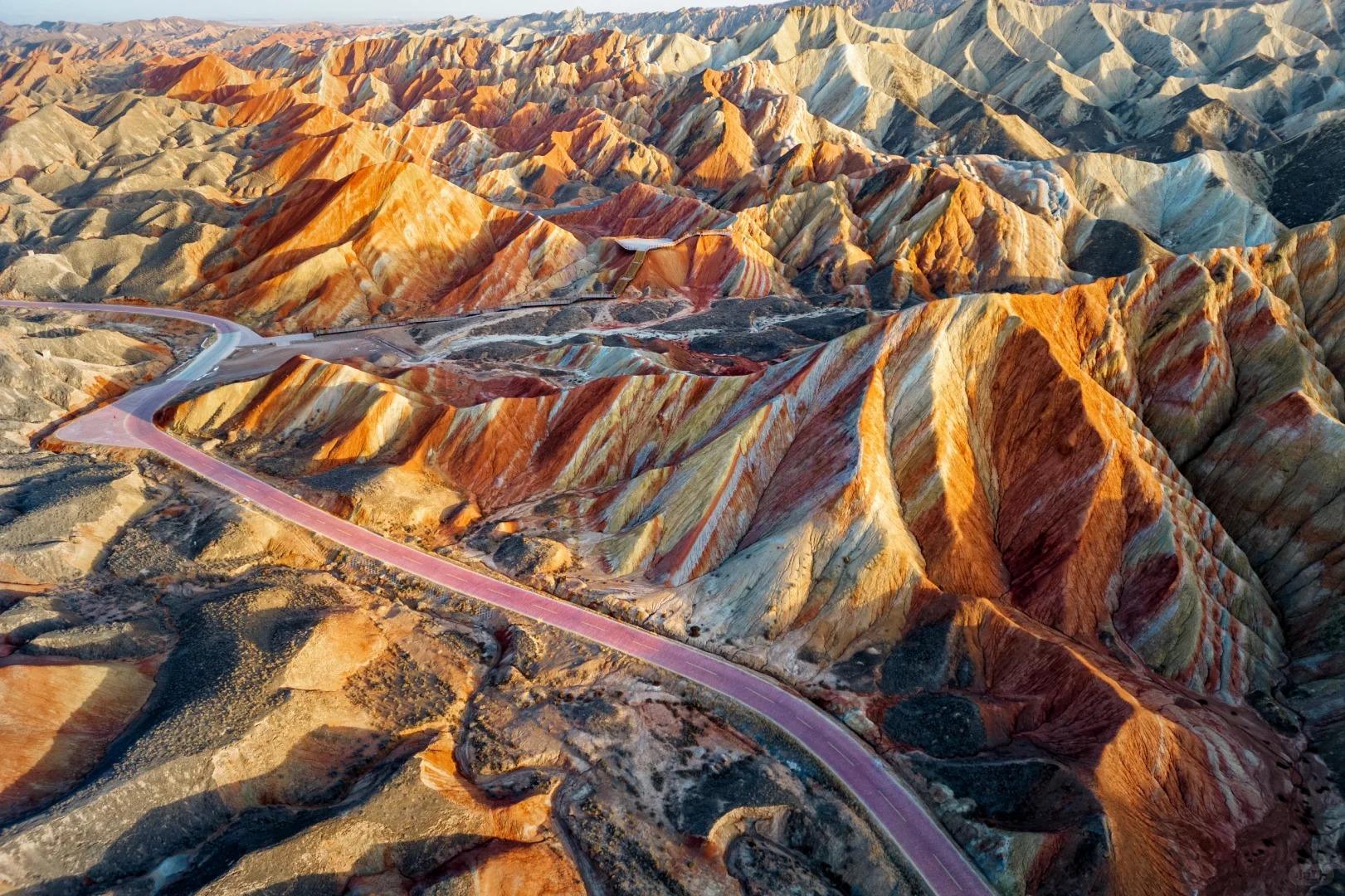
Photography Opportunities
- Sunrise and Sunset Shots: The Danxia landforms are particularly photogenic during the golden hours of sunrise and sunset. The low angle of the sun intensifies the red hues of the rocks, creating a breathtaking palette of colors. Photographers can capture the changing light as it plays across the undulating landscape, highlighting the unique textures and shapes of the rock formations. Popular viewing platforms at sites like Zhangye Danxia offer excellent vantage points for these shots.
- Panoramic Landscapes: The vast expanse of Danxia landforms provides excellent opportunities for wide-angle and panoramic photography. Capturing the scale and diversity of the colorful rock formations, especially from elevated viewpoints, can result in stunning landscape images. These shots can showcase the intricate patterns formed by the layered rocks and the contrast between the vibrant landforms and the surrounding environment.
- Detail and Texture Shots: For photographers interested in more abstract or intimate landscapes, the Danxia formations offer a wealth of details and textures. Close-up shots of the rock surfaces can reveal intricate erosion patterns, color gradients, and mineral formations. These images can highlight the geological processes that shaped the Danxia landscapes over millions of years.
- Night Sky Photography: Many Danxia sites are located in areas with minimal light pollution, making them excellent locations for night sky photography. Capturing the Milky Way or star trails above the distinctive silhouettes of Danxia formations can create striking and unique images. This type of photography requires careful planning and often special permission from park authorities.
Modern Importance
- Geological Research: Danxia landforms are of great scientific importance in the field of geology. They provide valuable insights into past climatic conditions, tectonic activities, and erosion processes. Ongoing research at these sites helps geologists better understand the formation of sedimentary rocks and the effects of long-term weathering. This research not only contributes to our knowledge of Earth’s history but also aids in predicting future geological changes and potential hazards.
- Environmental Conservation: The unique and fragile nature of Danxia landscapes has made them important focuses for environmental conservation efforts in China. Many Danxia sites are now protected as national parks or UNESCO World Heritage sites, promoting sustainable tourism practices and conservation awareness. These areas serve as living laboratories for studying ecosystem management and the impacts of climate change on sensitive geological formations.
- Tourism and Economic Development: Danxia landforms have become major tourist attractions, contributing significantly to local economies. Sites like the Zhangye Danxia National Geological Park attract millions of visitors annually, providing employment opportunities and boosting regional development. This tourism has led to improvements in local infrastructure and services, benefiting both visitors and residents. However, it also presents challenges in balancing economic benefits with environmental protection.
- Cultural Heritage and Education: In modern China, Danxia landforms are recognized as important parts of the country’s natural and cultural heritage. They play a crucial role in environmental education, helping to raise awareness about geological processes, biodiversity, and the importance of conservation. Many Danxia sites now include educational facilities and programs, serving as outdoor classrooms for students and the general public to learn about Earth sciences and environmental stewardship.
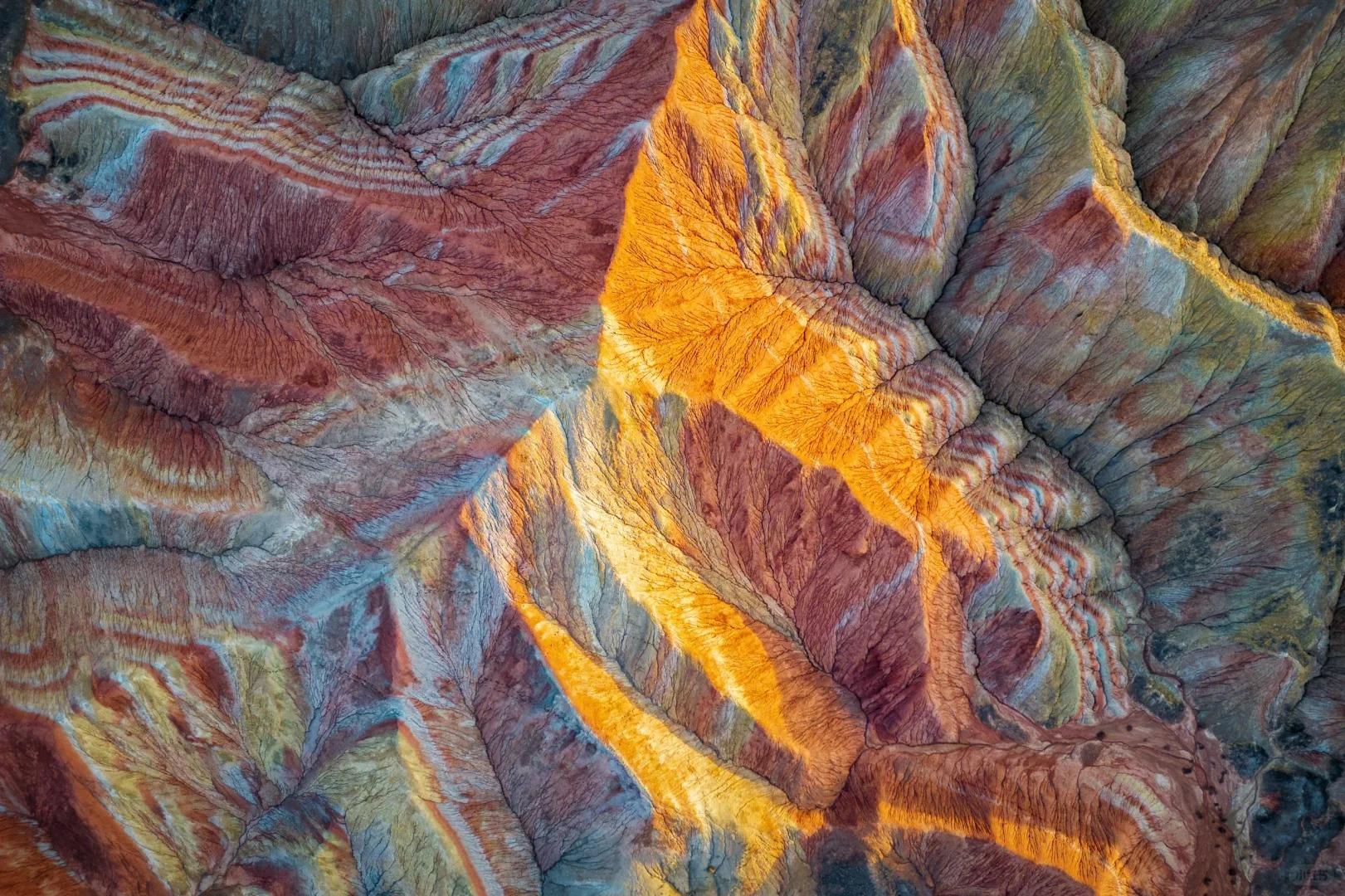
FAQ
- What is Danxia Landform famous for?
Danxia Landform is famous for its stunning red sandstone landscapes, featuring colorful layers of rock formations, steep cliffs, and unique erosional features. It’s particularly known for its vibrant colors, especially during sunrise and sunset. - What’s inside Danxia Landform?
Danxia Landform consists of various geological features including towering red cliffs, narrow ravines, natural pillars, arches, and caves. The interior of these formations is composed of layered sedimentary rocks, primarily red sandstone and conglomerate. - Is Danxia Landform free?
Most Danxia Landform sites charge an entrance fee. The cost varies depending on the specific location and the time of year. For example, the Zhangye Danxia National Geological Park charges an entrance fee that differs between peak and off-peak seasons. - Is Danxia Landform worth visiting?
Yes, Danxia Landform is definitely worth visiting. It offers unique and spectacular landscapes that are rarely found elsewhere in the world. The colorful rock formations and diverse geological features provide amazing photographic opportunities and a chance to witness some of nature’s most impressive creations. - What to do in Danxia Landform?
At Danxia Landform sites, visitors can:
1. Take scenic walks or hikes to various viewing platforms
2. Photograph the colorful landscapes, especially during sunrise and sunset
3. Learn about geology and the formation of these unique landscapes
4. Join guided tours for more in-depth information
5. Visit nearby cultural or historical sites in the surrounding area - How do I get to Danxia Landform in the local city?
The method of reaching Danxia Landform depends on the specific site you’re visiting. For example, to reach the Zhangye Danxia National Geological Park in Gansu Province:
1. Fly or take a train to Zhangye city
2. From Zhangye, take a public bus or hire a taxi to the park (about 40 km from the city)
3. Some hotels in Zhangye also offer shuttle services to the park - How to visit Danxia Landform?
To visit Danxia Landform:
1. Choose a specific Danxia site to visit (e.g., Zhangye, Danxiashan, or Longhushan)
2. Plan your trip during spring or autumn for the best weather and views
3. Book accommodation in the nearest city or town
4. Arrange transportation to the site (public bus, tour, or private vehicle)
5. Arrive early in the day to explore and stay for sunset if possible
6. Wear comfortable walking shoes and bring water, as there may be hiking involved
7. Consider joining a guided tour for more detailed information about the geology and history of the site


